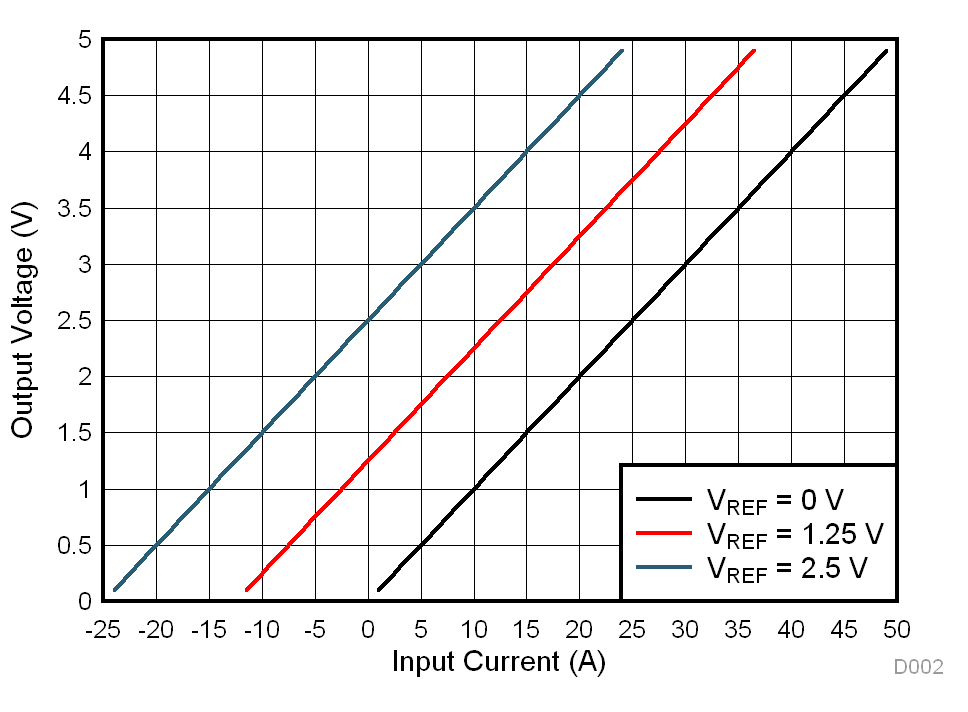ZHCSM20 June 2021 TMCS1100-Q1
PRODUCTION DATA
- 1 特性
- 2 应用
- 3 说明
- 4 Revision History
- 5 Device Comparison
- 6 Pin Configuration and Functions
- 7 Specifications
- 8 Parameter Measurement Information
- 9 Detailed Description
- 10Application and Implementation
- 11Power Supply Recommendations
- 12Layout
- 13Device and Documentation Support
- 14Mechanical, Packaging, and Orderable Information
9.3.4 External Reference Voltage Input
The reference voltage provided externally to the TMCS1100-Q1 on the VREF pin determines the zero current output voltage, VOUT,0A. This zero-current output level along with sensitivity determine the measurable input current range of the device, and allows for unidirectional or bidirectional sensing, as described in the Section 7.1 table. Figure 9-12 illustrates the transfer function of the TMCS1100A2-Q1 with varying VREF voltages of 0 V, 1.25 V, and 2.5 V. By shifting the zero current output voltage of the device, the dynamic range of measurable input current can be modified.
 Figure 9-12 Output Voltage Relationship to Input Current With Varying VREF Voltages
Figure 9-12 Output Voltage Relationship to Input Current With Varying VREF VoltagesThe input voltage on this pin can be provided by any external voltage source or potential, such as a discrete precision reference, a voltage divider, ADC reference, or ground. The VREF pin is sampled by the internal circuitry at approximately 1 MHz, then buffered and provided to the signal chain of the device. An apparent DC load of approximately 1 µA will be observed by the external reference. To prevent errors due to sampling settling, keep the source impedance below the level specified in the Section 7.9 table.